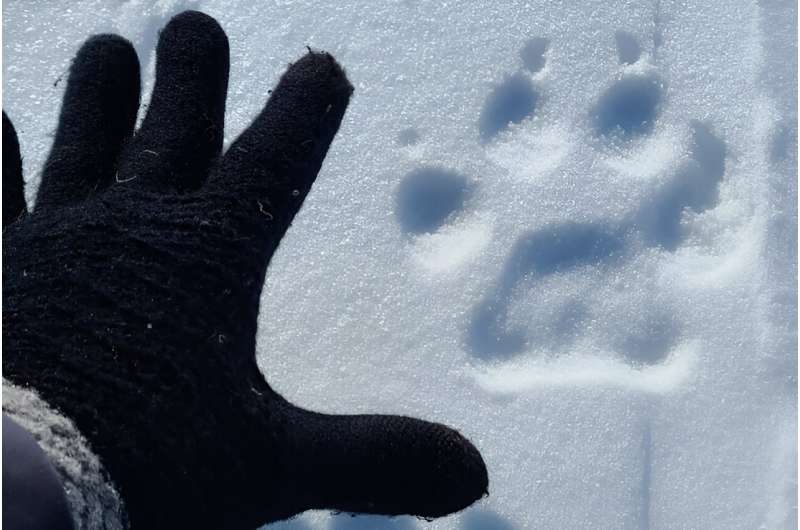This article has been reviewed according to Science X's editorial process and policies. Editors have highlighted the following attributes while ensuring the content's credibility:
fact-checked
peer-reviewed publication
trusted source
proofread
How will climate change affect how predators hunt prey?

As climate change warms the planet, weather patterns are likely to shift. Even the consistency of snow—how fluffy it is, for example—could change.
Laura Prugh, a wildlife ecologist and University of Washington associate professor in the School of Environmental & Forest Sciences, wants to know how these changing conditions will affect how predators hunt prey.
"When you wear snowshoes in deep snow, you stay on top of the snow. But if you take the snowshoes off, you might go in up to your waist. Certain species, such as wolves and lynx, have adapted to deep snow conditions because their feet act like snowshoes," Prugh said. "But their prey, such as caribou and moose, are heavier and have hooves instead of paws, so they sink in more. As climate change is making things warmer and changing the amount of precipitation, it's going to affect how deep and hard the snow is. And that's going to affect how deep the animals are sinking into the snow. Few scientists have looked at this before."
To answer this question, Prugh needed a snow expert. She teamed up with Jessica Lundquist, a UW professor of civil and environmental engineering. Together with a group of researchers, the two measured snow properties that led to a "danger zone," where prey would sink but predators would not. In a recent paper, published in Oikos, the team defined danger zones for 10 predator-prey pairs in both Washington's Methow Valley and Denali National Park in Alaska.
The first step was to figure out how to measure changes in the snow that would affect animals' ability to stay on top of the snow.
"Imagine having a snow fort—you've got this cave under the snow and it has a roof. And when people run on top of your snow fort, you hope it doesn't collapse on you, right? This is what we are trying to measure: the strength of the snow to support itself against collapsing," Lundquist said. "But snow is such a dynamic thing. It's not even one phase; you can't call it a solid, liquid or gas. It's all of the above, and that makes snow really fun to study."
The researchers used snow density as a proxy for its strength. Denser, more tightly packed snow, they reasoned, would be more likely to hold up an animal, compared to light, fluffy "powder skiing" snow.
To test this theory, the team traveled through Denali National Park and the Methow Valley via snowmobile or on cross-country skis in search of animal prints in the snow. Upon finding tracks, the researchers could then investigate the density and other properties of the surrounding snow.
Both Prugh and Lundquist agreed that one of the best parts of the collaboration was being able to learn from each other—Prugh learned to appreciate different types of snow, and Lundquist learned how to identify different animal tracks. The researchers also enjoyed working outside.
"There's this Calvin and Hobbes cartoon where Calvin's standing in front of his class holding a box of water. And he says, 'this was a snowflake outside,'" Lundquist said. "It's unique and exquisite, but when you bring it into the classroom, it melts. The science is outside. You cannot bring snow inside and have the same characteristics as the snow outside."
More information: Benjamin K. Sullender et al, Defining the danger zone: critical snow properties for predator–prey interactions, Oikos (2023). DOI: 10.1111/oik.09925
Journal information: Oikos
Provided by University of Washington



















